What should I do if I have diabetes? What are the solutions?
What should I do if I have diabetes? What are the solutions?
Diabetes, an old and difficult disease.
Suffering from diabetes not only aggravates the financial burden of patients, but also greatly reduces the quality of life of sugar lovers. Therefore, once you have diabetes, how to do? If you don't have a clue, you may want to do a good job of "three less and one more".
When it comes to diabetes, many people naturally think of the three do's and one don't - drink more, eat more, urinate more and lose weight - and today's mention of the three do's and one don't can make our blood sugar control a little smoother.
One less: less emphasis on vegetables and less on fruits
In order to control their diet, many diabetic patients will fill up their stomachs by eating more vegetables in order to reduce the intake of other foods. But in fact, eating vegetables alone is not weight loss.
Vegetables, although low in calories, will daughter-in-law a lot of cooking fat, the more you eat, the more fat you consume, the calories may exceed the limit. Therefore, in general, a day of fasting about 500 grams of vegetables can be.
In addition, many diabetics will think that fruits are high in sugar content, so they don't eat fruits, or simply use vegetables instead of fruits.
In fact, diabetics can still eat some low sugar content is fruit, for example, cherries, apples, grapefruit and other fruits have a glycemic index of less than 40, sugar lovers can choose.
Here, it is not recommended to replace fruits with vegetables. Vegetables and fruits are two kinds of food, the content and composition of their vitamins, minerals and dietary fiber are very different, thinking about combining with each other for better balanced sugar control. Let's say that the pectin contained in fruits, which is soluble dietary fiber, can stimulate gastrointestinal peristalsis and digestive secretion, while vegetables contain more insoluble dietary fiber, which is conducive to fecal discharge, the combination of the two, stabilizing blood glucose, lowering blood lipids, and preventing constipation.
Two less: less against your partner's wishes
The companion mentioned here is the oral antihypertensive medication. Due to the different conditions and lifestyle habits of each person, the antihypertensive drugs that are suitable for them are also different. Only by following the "mind" of these antihypertensive drugs can we control sugar smoothly.
Here's a tip: get in good with chopsticks.
Take your medication before you put chopsticks on the table.
These drugs are mainly sulfonylurea hypoglycemic drugs that prompt the pancreas to secrete insulin and must be taken 30 minutes before meals. Commonly used are: glipizide (meperidine, Disha tablets), glibenclamide (euglycemic), glibenclamide (ketoglycolide), glimepiride (Yamoly, Dibei) and so on.
Take your medicine before you pick up your chopsticks.
Also known as mealtime glucose regulators, these drugs have a fast-acting hypoglycemic effect that comes and goes, and must be taken 5 to 20 minutes before meals. Do not take the drug without eating to avoid hypoglycemia. There are Repaglinide (Novaluron, Voradil), Naglinide (Tangli).
Pick up your chopsticks and take your medicine immediately
Alpha-glucosidase inhibitors, chewed and paid down when taking the first bite of the meal, the drug can form a layer of sowing in the intestine, is the intestinal absorption of sugar slowed down, lowering postprandial blood sugar. Such as acarbose (bactrim, carboplatin), voglibose (Bexin) and so on.
Put down your chopsticks and take your pills.
Mainly metformin, this type of drug may cause gastrointestinal discomfort, such as nausea, vomiting, etc. Taken after meals, it can reduce the adverse effects. For example, Metformin, Gwashiorkor, Divalproex, Medicom and so on.
You don't have to listen to chopsticks.
Mainly insulin sensitizers, such as rosiglitazone (Ventia, Tylenol), pioglitazone (Riton, Etin). These medications are not affected by meals and need to be taken only once a day at a time that can be freely arranged, however, it is best to have a fixed time for taking the medication every day.
Three Less: Less Misconceptions
Myth #1: If you take too much, just add more agents.
Drugs that achieve glucose lowering through insulin secretion, arbitrarily increase the agent, may increase the burden on the pancreatic islets. And other types of agents on the large side is that the adverse effects will also increase. Therefore, this practice is not recommended.
Myth 2: Frequent medication changes
Generally speaking, drugs need to reach a certain dosage and time in order to exert their effects. Therefore, it is not recommended to change medication too frequently. The reasonable practice is to gradually adjust the dose of medication according to the blood glucose situation, and if the blood glucose does not fall or the control is not satisfactory, then switch to other medications or combine with other medications.
Myth 3: Just take the medication and don't review it
After taking the medication, the patient should check the relevant items frequently to understand the effect of taking the medication and then make adjustments to the dosage, i.e., the medication.
One more: keep an extra eye out for post-meal blood sugar
If you are self-testing your blood glucose, you should not only measure your fasting blood glucose, but also your postprandial blood glucose.
Postprandial blood glucose is elevated long before the diabetic patient's abnormally elevated fasting blood glucose, and by the time the elevated fasting blood glucose is detected, the condition is already quite serious. If elevated postprandial blood glucose is not taken seriously, treatment will be delayed.
If the answer is helpful to you, don't forget to click a like oh ~ 21
For more information on health, welcome to follow [Family Doctor Magazine] headline number
When you have diabetes, you can only take hypoglycemic pills and insulin? Wrong! Teach you a few tricks, double the effect of lowering sugar!
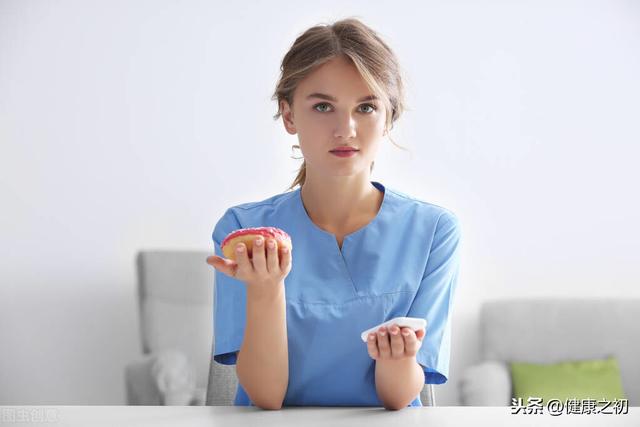
1. Dietary remembers "1234567"
Diet therapy is one of the "five carriages" for the prevention and treatment of diabetes mellitus, the daily dietary control of diabetic patients should pay attention to the strict control of the total calorie intake of food, of course, is not excessive dieting or eating vegetables and tofu year-round "asceticism", but at the same time, combined with nutritional Balanced, the diet must ensure that the proportion of carbohydrates, fat, protein and other nutrients, the specific diet can be simply remembered as "1234567":

"1" is 1 pound of fresh vegetables per day;
The "2" is to keep the staple food at 2 taels per meal;
"3" is no more than 3 tablespoons of vegetable oil in your meals per day;
The "4" is for 4 two fruits a day;
The "5" is to ensure at least five types of protein each day, such as one or two fish, one or two meats, one egg, one bag of fresh milk, and one serving of soy products;
The "6" is that there should be no more than 6g of sodium in your meals per day;
"7" means that you should not drink less than 7 glasses of plain water a day;
Remember the above few dietary phrases, stick to them, and control your diet is the foundation of lowering blood sugar.

2. Exercise and remember "1,3,5,7,9".
Long-term regular exercise is conducive to diabetic patients to maintain a healthy weight, and exercise can promote blood circulation, improve insulin resistance in the body of diabetic patients, and protect the pancreatic islet function. For most diabetic patients, moderate-intensity aerobic exercise is more appropriate, the body sweats slightly after exercise is best, generally need to adhere to 30min, at least five days a week. Specific exercise precautions can be simply memorized as "one, three, five, seven, nine":

"One" means that you should not exercise immediately after a meal, but should do so one hour after the meal;
"Three" means that each exercise should be maintained for more than 30min;
"Five" weekly exercise should adhere to at least five days, to develop the habit of regular exercise;
"Seven" is the requirement to exercise with attention to the intensity of the exercise, the pulse rate during exercise does not exceed 170-age;
"Nine" means that the diabetic patient's exercise should be persisted for a long time in order to reach the desired effect.
Good life from the beginning of health, the beginning of health, health science professional media!
If you have diabetes, of course you need to be treated. Here said treatment, is to go to the regular hospital, listen to regular doctors, with regular drugs. Instead of going to the black clinic, unlicensed doctors, believe in ancestral secret recipes, buy all kinds of strange things to make wine to drink.
When you have diabetes, the first thing you must do is to intervene in your life. Be ruthless and tell yourself to keep your mouth shut or you're going to meet Marx. Go exercise properly or you'll never be able to move! Diabetes isn't scary, it's the complications that come with diabetes that are the things that kill you.
Keep exercising every day and don't eat anything. I once heard an endocrine professor tell his patient that the patient particularly wanted to eat grapes, and the professor said, "You're in pretty good control now, you can eat them, but not more than ten grapes. Sounds a bit cruel right, but for diabetics, strict adherence is the way to save your life.
When you have diabetes, don't believe in the myth of a complete cure, what mankind hasn't done yet can't somehow happen to you. The treatment of diabetes is to control your blood sugar, to stabilize your blood sugar in the normal range, to prolong your life and delay the appearance of complications. If you don't get superstitious, you won't get scammed.
With the change of time, our diet is getting better and better, we eat more and more, all kinds of diseases come one after another, among which diabetes mellitus has become a particularly common chronic disease, it is a group of metabolic diseases characterized by high blood glucose, while high blood glucose is due to defective secretion of insulin or impaired in its biological role, the prolonged high blood glucose may lead to the occurrence of chronic damage to various tissues, dysfunction, etc. , especially the eyes, kidneys, heart, blood vessels, and nerves.
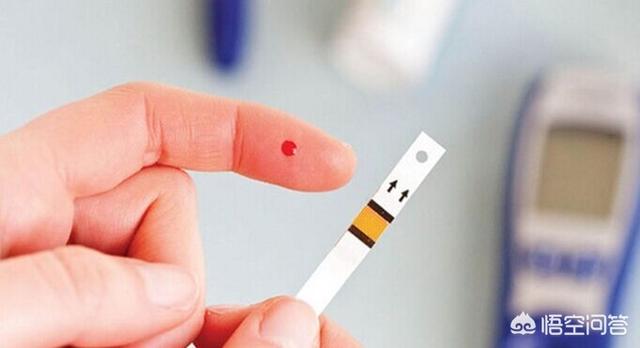
Diabetes mellitus is medically categorized into four main groups based on aetiological evidence, namely type 1 diabetes, type 2 diabetes, gestational diabetes, and specific types of diabetes.
Type 1 diabetes, formerly known as insulin-dependent diabetes mellitus, occurs mostly in children and adolescents, but can also occur at all ages. The onset of the disease is relatively acute, with an absolute shortage of insulin in the body.It must be treated with insulin.
Type 2 diabetes was originally called adult-onset diabetes mellitus, mostly develops after the age of 35 to 40, accounting for more than 90% of diabetic patients. The ability to produce insulin in the body of patients with type 2 diabetes mellitus is not a complete loss, and some of the secretion has not become less effective, but the effect of the insulin is poorer.
Currently, the best treatment options for type 2 diabetes include pharmacologic and non-pharmacologic treatments. The non-pharmacological treatment consists of a rational diet and physical activity, which has been shown to be very effective. Exercise has a significant effect on increasing substrate utilization, and myoglycogen uptake can be increased 20-fold during exercise. Therefore, exercise has an irreplaceable position in the diabetes treatment system.

Gestational diabetes is a condition in which a woman does not have diabetes before she becomes pregnant and develops abnormal blood sugar levels during pregnancy. Gestational diabetes requiresDietary management and moderate exercise to control blood glucose. When blood glucose cannot be effectively controlled after strict dietary management and exercise therapy, gestational diabetics should receive insulin therapy.Gestational diabetes is usually a temporary state, and after the end of pregnancy, the body's hormones return to normal and the balance of blood glucose regulation naturally becomes normal.
Special diabetes mellitus is related to genes, monogenic diabetes mellitus, also for rare diseases, some newborns are particularly serious, and some have no obvious symptoms in old age, but because in the general clinical level, there is no strict differentiation, so there are many misdiagnosis and miscarriage of justice. For example, there are special diabetes mellitus is easy to misdiagnose as type 1 direct use of insulin treatment, in fact, theIt can be controlled by taking oral sulfonylureas. Therefore, genetic testing is needed for diagnosis.
To summarize:
We have to choose the treatment according to the specific type of diabetes, only symptomatic treatment of diabetes so as to effectively control blood sugar.

It has now been found that diabetes is now a metabolic disease that can be controlled by improving poor lifestyle habits.
It used to be that when you had diabetes people would be the first to go to the hospital to see a doctor and take medication, and what happened, did your diabetes get better? No bar, but instead the amount of medicine increased, and even some need to tie insulin. This is because diabetes is a metabolic disease, drugs can only play a role in controlling blood glucose values, but at the same time long-term medication can also cause liver damage.
So what can you do if you have diabetes? The best way is to improve bad habits.
First, the diet must be controlled by eating foods with a low glycemic index.For example, use coarse grains instead of rice and noodles, don't drink congee, eat more vegetables, eat lean meat instead of fatty meat and so on.
Second, be sure to exercise.The exercise mentioned here is not very high intensity, but a half-hour brisk walk after meals every day, 2-3 times a week to lift the mineral water bottle to do a little resistance exercise can be. In addition, you can do more housework, such as mopping the floor, wipe the furniture and so on.

Finally, test your blood sugar regularly.Since blood sugar is a problem, it is important to test regularly, especially 2 hours after eating fruit, as it is good to know which fruits do not cause your blood sugar to rise.
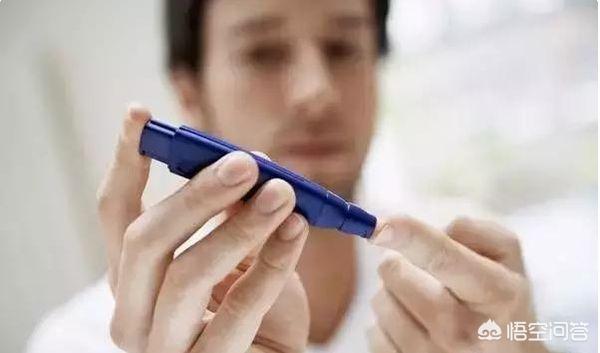
The method introduced to you here does not mean that it is against taking medicine, medicine should be taken or eat, but in addition to taking medicine, pay attention to the lifestyle is more important.
Nutritional Pirates Elf Wizard~Liu Qian (National Public Dietitian II)/nutrition+Editor, microcourse leader/Wang Xingguo Special Training Class5student enrolled in a course/(Member of the Chinese Nutrition Society, specializing in lifestyle guidance for metabolic diseases)
Having diabetes should be controlled by blood sugar and managed holistically.
Once the diagnosis of diabetes is clear, different treatment programs should be initiated according to the blood glucose level to control the blood glucose within the target range. It is important to note here that dietary control is the foundation of any treatment measure. To summarize, these five aspects include: dietary control, exercise therapy, medication, blood glucose monitoring, and diabetes education, which is often referred to as the five carriages of diabetes management.
Diet, we suggest avoiding foods that have a big impact on blood glucose, such as porridge, watermelon, grapes, pasta, etc.; Exercise, we suggest at least 150 minutes of moderate-intensity aerobic exercise per week, such as walking, jogging, etc.; Treatment, work closely with your doctor, take your medication on time, monitor your blood glucose regularly, and follow up with your doctor in the clinic regularly, and seek medical attention if you find any abnormality; Correctly recognize that diabetes is a chronic disease that requires long-term medication, which cannot be stopped at will, and take or use common medications correctly. You can't stop taking medication at will, and take or use common medications correctly.
In addition to the above principles, diabetes nowadays advocates integrated management, which takes into account the patient's age, underlying disease, life expectancy, etc. In addition to blood glucose management, consideration is given to controlling blood pressure and lipid levels within the ideal range, preventing or delaying the onset of diabetic complications, and improving the quality of life as much as possible.
The authoritative interpretation of Pharmaceutical Affairs, unauthorized reproduction, plagiarism will be punished.
Thanks for the official invitation to answer the question.
There are many people who already have diabetes, and it is old hat for old patients to speak about this topic, so there is little point in repeating the original answer, so this answer is only for patients who have just been diagnosed with diabetes shortly after.
New diabetes is not terrible, there is a high probability of being able to reverse, but be careful, I said this reversal, not necessarily in the hospital to solve the problem, it is recommended to listen to a variety of information, "listen to both sides is clear, bias is dark" is certainly not a problem, if you only listen to one side of the story, the probability of ever taking medication is a big event.
I have met many diabetics who are very bullish and I always wonder what is so bullish about a patient being sick. There are people who deal with diabetics who get worse and worse every year and you still think they are worth relying on, that's what's wrong with your head.
Don't be afraid of diabetes, I have a good way to help you stabilize your blood sugar control, regain your health, and still be able to live a healthy and happy life.
My elementary school classmate, who is the same age as me, is now 43 years old. His old father, Uncle Zhao, is older, 76 years old. My old classmate is the youngest of the brothers, so the age gap between him and his parents is rather large. His family of four lives with his parents and usually eats together.
Uncle Zhao is a decades old diabetic, but the body has always been very healthy. 76 years old, physical examination of the body indicators are very normal, according to the doctor, his physical examination of the data than many 30-year-old young people better.

How did Uncle Cho do it?
Uncle Zhao was "blessed by misfortune"! Decades ago, he was diagnosed with diabetes. In order to control his blood sugar, he changed his lifestyle.
Do not overeat, eat 80% of each meal
If you look carefully, you will find that many long-lived old people, when eating by no means overeating, are eaten to 7, 8 points full. Overeating leads to obesity, but also with the arrival of high blood fat, high blood pressure, high blood sugar and other diseases, so a major recipe for a long and healthy life, is to eat eight minutes full at each meal.
Uncle Zhao is like this, never overeat, and then delicious meal, never eat to hold out, control the 80% full will be determined not to eat.

Replace staple foods with mixed grains and rarely eat refined rice and noodles
Uncle Zhao's biggest secret to controlling blood sugar is to replace refined rice and noodles with buckwheat noodles at every meal. The refined rice and noodles are high carbon water food, glycemic index is very high, is not good for controlling blood sugar. Mixed grains are different, the content of starch in mixed grains is relatively low compared to other grains, starch is the main source of sugar. The high content of vitamins, trace elements and dietary fiber in grains can slow down the rate of sugar absorption, which is conducive to sugar control. According to classmates, Uncle Zhao's family steamed bread and noodles are made of buckwheat noodles. But buckwheat noodles are not sticky enough, not good to live into the noodles, which can be added to a small amount of white flour to enhance the viscosity.

Using the ratio of buckwheat flour and white flour ratio of the ratio can be 1:1, to give you the practice of steaming buckwheat noodle buns:
1、Prepare yeast powder water
Put the yeast powder into warm water and stir to melt it, use 30 to 35 degrees of warm water in winter and 25 degrees of warm water in summer is best. Water that is too hot or too cold is not good for yeast fermentation.
2、Knead the dough
Pour 750 grams of buckwheat flour and 750 grams of white flour into a bowl, pour in the melted yeast water and mix well, and make a dough.
3, the kneaded dough covered with a damp cloth, the basin in a warm place, the summer room temperature can be, winter can be placed in the basin next to the heating equipment, such as underfloor heating put on the floor, no underfloor heating can be placed on the electric blanket can also.
4, wait for the noodles to rise until twice as big as you can make the steamed buns. Knead the noodles into long strips and pull them into even-sized dosages with your hands. Spread the dough on the board and knead the dough into buns. Knead the buns placed 20 minutes, the second rise.
5, steam buns in a pot of cool water, put a good steam drawer, brush a layer of oil on the steam drawer to prevent sticking, cold water on the steamed buns open high heat steaming.
6, 15 minutes after turning off the heat, do not lift the lid, simmer for 5 minutes to prevent the buns shrink back in water. 5 minutes after opening the lid to uncover the buns to cool can be.

Increase Exercise to Lower Blood Sugar
You may not realize that exercise is a great tool for lowering sugar. There are many diabetics who love to eat but do not love to exercise. To effectively control sugar, you must move, do not be lazy, to be healthy! You can focus on the time to exercise, can also be spread out throughout the day when you have time to exercise.
Exercise is very simple, Uncle Zhao is every day after dinner and his partner went out to walk for an hour, diabetics are best not to strenuous exercise, to choose a soothing way of exercise.

Maintain a good mindset for successful blood sugar control
Uncle Zhao is a positive and optimistic person who always looks on the bright side of things. Not only is he happy himself, but he also makes everyone around him happy. If anyone in the family is unhappy, he can make them smile with a few words.
After getting diabetes, Uncle Zhao did not take it seriously at all, should eat and drink, every day smiling, but successfully reversed the trend, broken cans boiled good cans, the same age than down. Not only longevity, but also health, physical quality is superb, looks like living a hundred years old is not a problem.

I'm Jenny Yu, a dietitian at the Army General Hospital, and today, we're just going to talk about sodium in the diabetic diet.
It is well known that meals for diabetic patients need to control not only the total calorie and total carbohydrate intake throughout the day, but also foods high in cholesterol and saturated fatty acids, as well as strict control of salt intake.

Excessive salt in a diabetic's diet can increase the amount of a substance in the body called a "hunger hormone".
This substance inhibits insulin secretion, thus creating insulin resistance. But at the same time "hunger hormone" will also increase the appetite, so you eat more, calories and obesity, so diabetics tend to be more common in the obese people.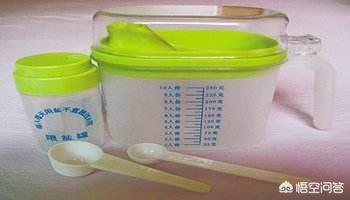
The Dietary Guidelines for Chinese Residents recommend a low-salt, low-fat diet with a daily dietary intake of no more than 6 grams of salt. Salt itself also increases the likelihood of cardiovascular and cerebrovascular diseases such as hypertension and hyperlipidemia, and aggravates vascular damage in diabetics, promoting the occurrence of diabetic comorbidities. Staple foods made with added salt are not suitable for diabetics. Salt makes the starch granules in the flour more mushy due to fermentation, making it easier to digest, which raises postprandial blood glucose more quickly.

Diabetic patients on a high-fat, high-cholesterol diet and excessive salt intake are more likely to lead to vascular sclerosis and other complications. For patients with "three highs", it is recommended that they use low-sodium salt to prepare food on a daily basis.
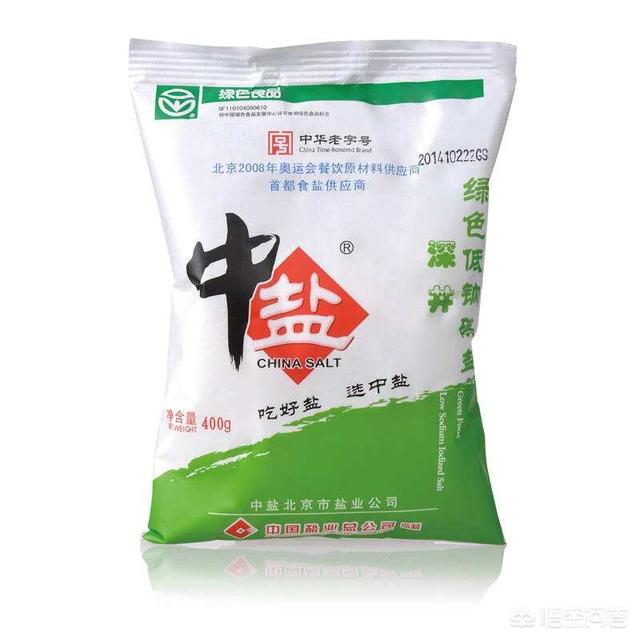 Low sodium salt significantly reduces dietary sodium intake because it replaces part of sodium chloride with potassium chloride. Compared with normal sodium salt, it is low in sodium (about 70% of sodium chloride) and rich in potassium (about 30% of potassium chloride), which helps the body's sodium and potassium balance and reduces the risk of hypertension and cardiovascular diseases. (Low sodium salt should not be used by patients with high blood potassium)
Low sodium salt significantly reduces dietary sodium intake because it replaces part of sodium chloride with potassium chloride. Compared with normal sodium salt, it is low in sodium (about 70% of sodium chloride) and rich in potassium (about 30% of potassium chloride), which helps the body's sodium and potassium balance and reduces the risk of hypertension and cardiovascular diseases. (Low sodium salt should not be used by patients with high blood potassium)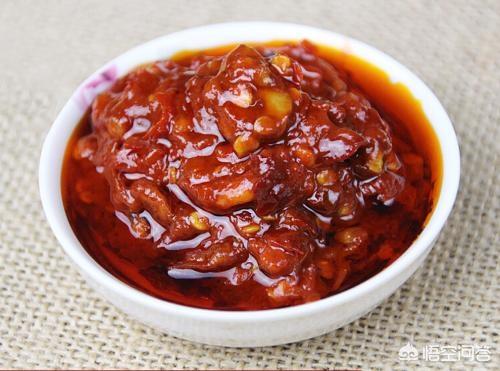
Reducing dietary salt intake requires not only attention to salt intake, but also control of monosodium glutamate (MSG), chicken essence (CSG), soy sauce (Soy sauce), noodle sauce (NPS), soybean paste (Soya paste), hot sauce (Chili sauce) and oyster sauce (Oyster sauce), which have a high salt content in order to achieve the effect of flavoring and antimicrobial properties. The jam will also add salt, because it can increase the sweetness of the jam, so diabetics need to pay attention to the sodium content of the "Nutrition Facts Table" in the label when buying seasonings.
In summary, diabetic patients health "five carriages" is very important, but often ignore some details of life, so that the road to sugar control a loss, do a good job in the prevention of diabetes and health care, do not ignore the "sodium" problem!
You are welcome to click [follow] my Wukong Q&A, and you can ask any nutrition or diet questions you have at any time!
The images in this article are sourced from the internet, and we would like to thank the author of the images!
Author of this article:

Yu Renwen Dietitian, Army General Hospital
The first batch of registered dietitians of China Nutrition Society
First Prize and Grand Prize Winner of China's First Pregnancy Dietary Nutrition and Menstrual Meal Competition
Dietitian for the veterans' contingent at the "9.3" parade for the 70th anniversary of the victory in the War of Resistance
Thanks for the invitation!
I've answered this many times, but I'm still looking at the high opinions of my fellow teachers and friends.
My point of view, refining good legs, strict control of the mouth, medicine and food into the same, cultivate the body to maintain fitness good, happy and happy health protection.
Thank you! Bye!
This question and answer are from the site users, does not represent the position of the site, such as infringement, please contact the administrator to delete.